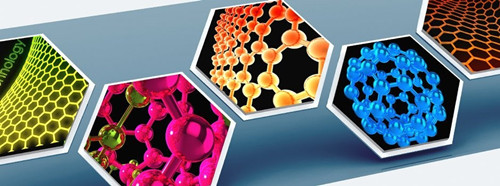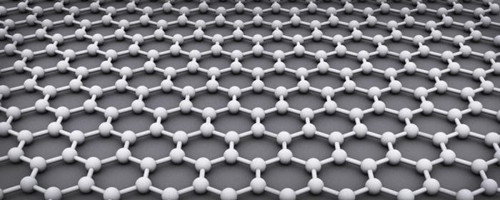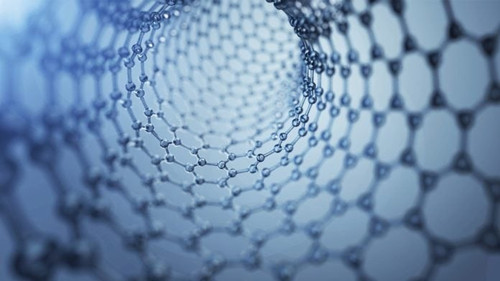By Dr.Zhang from Nanjing Normal University | 16 July 2020 | 0 Comments
Graphene- The Wonder Material!
Graphene- The Wonder Material!

1. What is grapheme?
Graphene is a single layer of carbon atoms, tightly packed into a hexagonal honeycomb lattice. It is an allotrope of carbon, existing in the form of sp2 bond atomic plane, with molecular bond length of 0.142 nanometers. Layers of graphene form graphite, spaced 0.335 nanometers apart. The separated graphene layers in graphite are held together by van der Waals forces that can be overcome during the graphene stripping process.
2. Graphene’s Properties
(1) The thinnest single-atom-thick.
(2) The lightest material.
(3) The strongest compound.
(4) The best thermal conductor at room temperature.
(5) The best electrical conductor.
(6) Absorption of light in the visible and near-infrared parts of the spectrum (PI alpha ≈2.3%).
3. Graphene’s uses

(4) Coatings, sensors, electronics and more
Graphene has many other promising applications: anticorrosive coatings and coatings, efficient and accurate sensors, faster and more efficient electronics, flexible displays, efficient solar panels, faster DNA sequencing, drug delivery, and so on.
4. Potentials of graphene

Graphene-powered supercapacitors store a lot of energy, making them easier to charge and discharge quickly. Because of its efficient and fast charging properties, graphene makes it easier to acquire and carry the devices that requires higher power.
Graphene-based battery alternatives have improved energy storage and improved performance through their lifetime of use and charging. The energy capacity and reliability of the battery are improved by adding two-dimensional materials to the battery electrode. Subsequently, the devices can be more efficient for a longer period of time and provide higher cost performance.
(2) Applying graphene for advanced technology
In 2016, Huawei, a china-based network, telecommunications and services company, revealed that it was trying to develop an innovative graphene-enhanced lithium-ion battery. The marketing pitch for the battery is that it can maintain function and run longer even at temperatures above the 50°C limit. Using a number of innovative technologies, Huawei battery ensures heat dissipation by:
As a great and fundamental building material, it seems that every industry can benefit from this new material. Time will tell what kind of impact can this “wonder material” can make, let us wait and see!
TRUNNANO (Luoyang Trunnano Tech Co., Ltd ) is a professional Graphene manufacturer with over 12 years experience in chemical products research and development. If you are looking for high quality Graphene, please feel free to contact us and send an inquiry.

1. What is grapheme?
Graphene is a single layer of carbon atoms, tightly packed into a hexagonal honeycomb lattice. It is an allotrope of carbon, existing in the form of sp2 bond atomic plane, with molecular bond length of 0.142 nanometers. Layers of graphene form graphite, spaced 0.335 nanometers apart. The separated graphene layers in graphite are held together by van der Waals forces that can be overcome during the graphene stripping process.
2. Graphene’s Properties
(1) The thinnest single-atom-thick.
(2) The lightest material.
(3) The strongest compound.
(4) The best thermal conductor at room temperature.
(5) The best electrical conductor.
(6) Absorption of light in the visible and near-infrared parts of the spectrum (PI alpha ≈2.3%).
3. Graphene’s uses

- Mechanical strength
- Thermal applications
- Energy storage
(4) Coatings, sensors, electronics and more
Graphene has many other promising applications: anticorrosive coatings and coatings, efficient and accurate sensors, faster and more efficient electronics, flexible displays, efficient solar panels, faster DNA sequencing, drug delivery, and so on.
4. Potentials of graphene

- Portable batteries of all kinds
Graphene-powered supercapacitors store a lot of energy, making them easier to charge and discharge quickly. Because of its efficient and fast charging properties, graphene makes it easier to acquire and carry the devices that requires higher power.
Graphene-based battery alternatives have improved energy storage and improved performance through their lifetime of use and charging. The energy capacity and reliability of the battery are improved by adding two-dimensional materials to the battery electrode. Subsequently, the devices can be more efficient for a longer period of time and provide higher cost performance.
(2) Applying graphene for advanced technology
In 2016, Huawei, a china-based network, telecommunications and services company, revealed that it was trying to develop an innovative graphene-enhanced lithium-ion battery. The marketing pitch for the battery is that it can maintain function and run longer even at temperatures above the 50°C limit. Using a number of innovative technologies, Huawei battery ensures heat dissipation by:
- Anti-decomposition additives within the electrolyte;
- Chemically stabilized crystal cathodes; and
- Graphene.
As a great and fundamental building material, it seems that every industry can benefit from this new material. Time will tell what kind of impact can this “wonder material” can make, let us wait and see!
TRUNNANO (Luoyang Trunnano Tech Co., Ltd ) is a professional Graphene manufacturer with over 12 years experience in chemical products research and development. If you are looking for high quality Graphene, please feel free to contact us and send an inquiry.
Leave a Reply
Your email address will not be published.Required fields are marked. *
POPULAR BLOG
- What is graphene aerogel?
- What is Cadmium telluride CdTe and CdTe solar cell?
- Four types of surfactants and their differences and applications
- What is the explosive welding cladding of metal plates?
- What is EBS Ethylene Bis Stearamide?
- An article lets you understand the characteristics and applications of sodium silicate
- Advantages of graphite anode for lithium-ion battery
- What is Spherical Quartz Powder?
- What is sodium silicate?
- Characteristics and Application of Spherical Alumina
CATEGORIES
